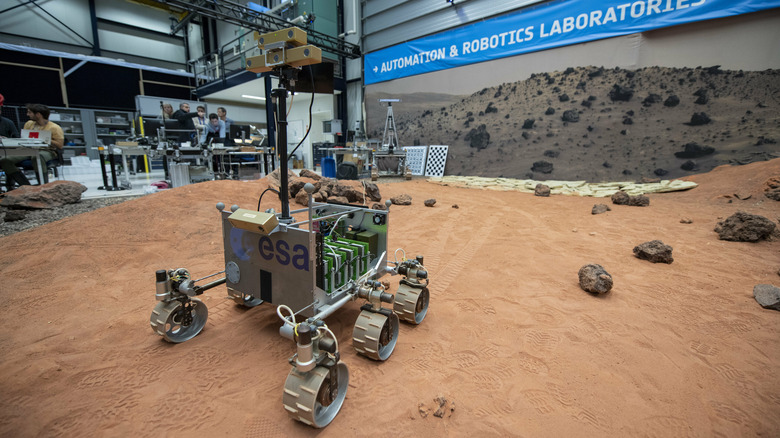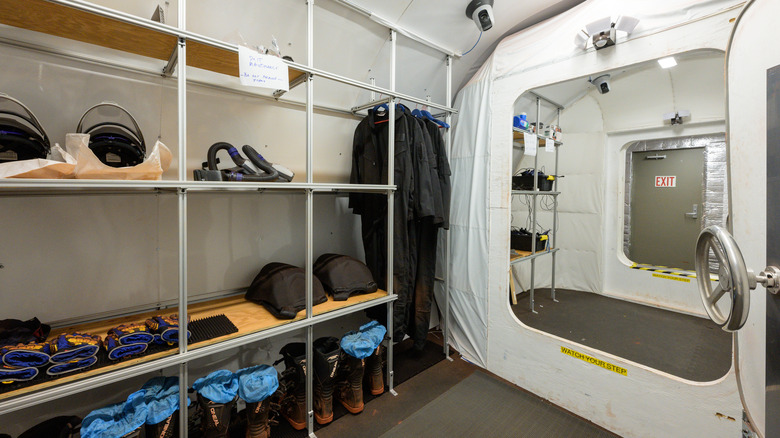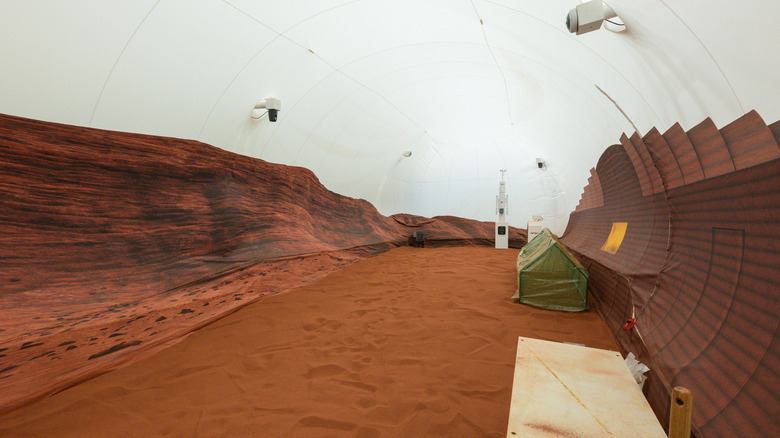Here's Why Space Agencies Build Fake Mars Environments
Many think that to experience Mars up close, they'd have to travel off world, but not necessarily. Space agencies frequently build fake Mars environments as close as they can possibly get to the real thing. The idea isn't just for fun: It's an important way to test technology like rovers and see how they'd fare on another planet before they are actually sent there.
The European Space Agency (ESA) recently shared an image of its Mars terrain recreation, located at the Planetary Robotics Laboratory at the European Space Research and Technology Centre in Noordwijk, the Netherlands. This particular area, known as the "Mars Yard," is nine meters by nine meters, and uses sand, gravel, and rocks to recreate the Mars surface.
This yard has been used to test out rovers like the ExoMars rover, which was originally intended to launch in 2020 before it was delayed due to the pandemic. The rover was put through its paces, particularly its autonomous driving system. The idea was to see whether the rover could plot its own path around obstacles, which it managed successfully.
"The rover creates a digital map of its vicinity and calculates how best to reach that target point. Looking at the map it tries to place the rover in all these adjacent locations to work out if the rover would be safe in every one of these positions — or if the rocks are too high or terrain too steep," ESA engineer Luc Joudrier explained at the time.
[Featured image by ESA–G. Porter via Wikimedia Commons | Cropped and scaled | CC BY-SA 3.0 IGO]
Fake environments for humans
Fake Mars environments aren't only for testing robots, though. Space agencies like NASA also create fake Mars environments for special missions called "analog studies," which test how humans would react to living in a Mars-like environment.
The reason that's necessary is that the furthest humans have traveled is to the moon, and then the astronauts only stayed for a few days. A mission to Mars will have to be much longer. The journey from Earth to Mars takes around seven months each way, and it has to be made at a particular time when the planets' orbits are closely aligned. That means that the most likely crewed Mars missions would see astronauts away from Earth for around two years.
No one is quite sure what the psychological and health effects would be from being away from home for so long. That's why NASA is preparing an analog study called CHAPEA, or the "Crew Health and Performance Exploration Analog," in which participants will spend one full year locked in a fake Mars environment. Scientists will study how this affects their well-being and their health.
"The simulation will allow us to collect cognitive and physical performance data to give us more insight into the potential impacts of long-duration missions to Mars on crew health and performance," said the principal investigator of the CHAPEA project, Grace Douglas. "Ultimately, this information will help NASA make informed decisions to design and plan for a successful human mission to Mars."
What a fake Mars habitat looks like
For the CHAPEA study, NASA has built a 3D printed habitat which is 1,700 square feet in size. The habitat includes rooms like four private crew quarters, workstations for performing research tasks, a medical station, an area for growing and preparing food, and a living space for the crew to relax together.
The growing of food is an important part of the CHAPEA mission, as most plans for long-term visits to Mars include some way of astronauts growing their own crops there. That's because food is heavy, and there wouldn't be space to carry all the food a crew would need for a long mission. Researchers want to know how the crew members handle growing and eating their own food, and whether there are any effects on their health.
The habitat isn't only an indoor affair though. There's also a large outdoor sandbox where the crew will conduct simulated Mars-walks using virtual reality and a treadmill. The idea is to simulate the types of work that astronauts would have to do on Mars, like putting on spacesuits and walking considerable distances, as well as identifying and cataloging rock samples.
The four crew members who have been chosen for the analog mission are similar to the types of people who would be astronauts, and include a research scientist, an engineer, a doctor, and a microbiologist. The first CHAPEA mission is scheduled to begin late June 2023, and two more similar missions are planned for 2025 and 2026.


